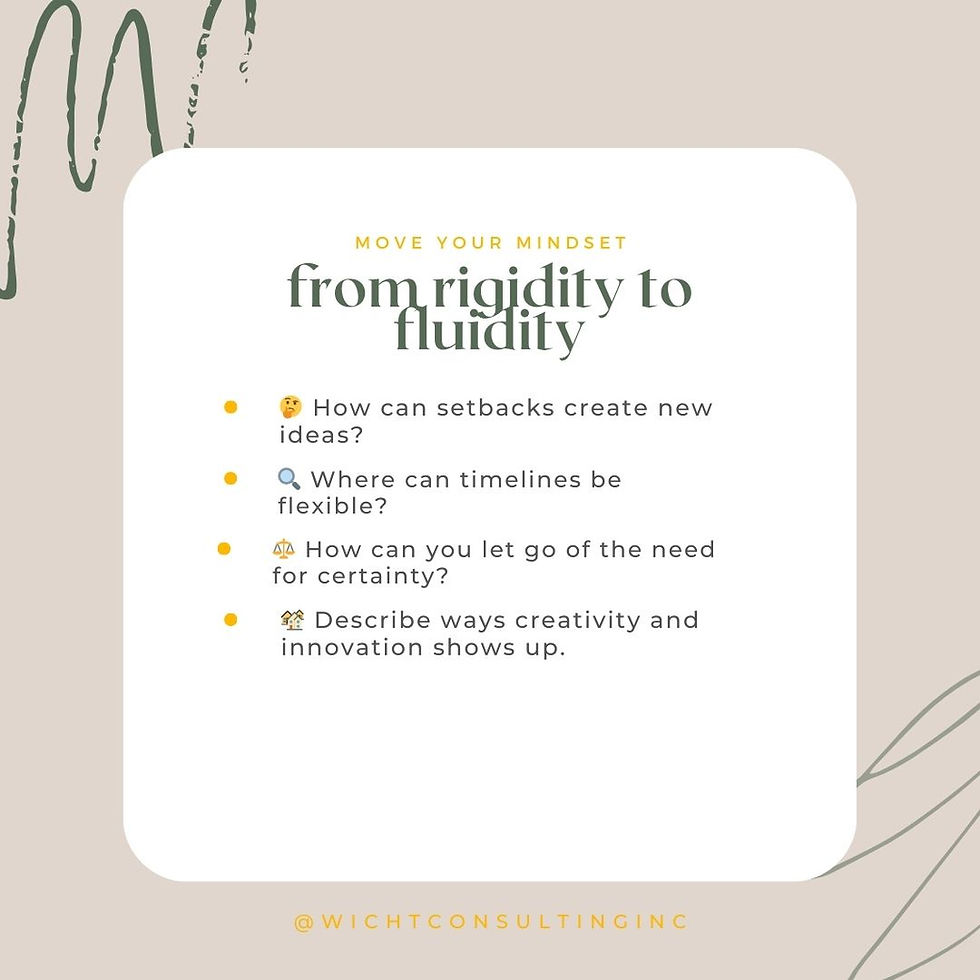What do I mean by...
- sarawicht

- Oct 21, 2024
- 4 min read
Every critical conversation has its context and content, but almost all touch on identity and injustice. Pinning down a few key terms can help us, and our students, colleagues, and caregivers, think and talk about critical topics more clearly. Consider what we understand when we hear the words culture, identity, and injustice. Do these words carry pre-existing understandings or perhaps bias? Do any of them trigger a response—emotional or other? I like to define language used frequently at the onset of working in groups, delivering professional development, and teaching a class. Setting the stage in advance can reduce misunderstandings and support critical dialogue.

CULTURE.
When I say culture, it extends beyond race, ethnicity, and nation of origin. Culture is all the ways identity characteristics and lived experiences intersect to form a unique individual. There are above-the-surface and below-the-surface cultural characteristics—that which can be seen, felt, smelt, tasted, etc., and there are below-the-surface cultural characteristics—that which we cannot see, feel, smell, taste, etc. For example, my clothing, food, language, holidays, and music are above the surface yet what I believe about personal space, being on time, and responsibility to monetarily provide for my family are below the surface. Each of us is a combination of those above-the-surface and below-the-surface elements.
IDENTITY.
The set of visible and invisible characteristics we use to categorize and define ourselves and those around us (e.g., gender, race, age, religion, ethnicity, socioeconomic status, language, marital/family status, ability, sexual orientation, etc.). Identity shapes our experience by influencing the ways we see ourselves and the ways others see us. We can extend our conversation about identity by considering identity groups, dominant/non-dominant identity, and intersectionality.
Identity Group. A group of people who share one or more identity characteristics (e.g., women, Latine people, teenagers, etc.). Members of an identity group can share a wide range of experiences, positive and negative. Sharing experiences does not mean every individual in the identity group has the same experiences, but shared identity can create affinity. For people who are under-represented in work and school spaces, finding colleagues and peers who share their experiences can reduce some of the feelings of isolation they might experience.
Dominant Identity Group. Instead of using “minority/majority” to define a group of people, I work to use “dominant/non-dominant” language. A dominant identity group is one whose members (regardless of group size) share a common privilege and often power. An individual may simultaneously belong to dominant identity groups (e.g., cisgender, straight, white) and non-dominant identity groups (e.g., undocumented, experiencing poverty). This shift in language has helped me to decenter whiteness and center the global majority of BIPOC (Black, Indigenous, People of Color) populations. This is especially important as fractional language (e.g., being a % of this ethnicity and % of that ethnicity) has historically been used to marginalize and oppress people. (More about this in an upcoming blog. For now, try to adopt this thinking through self-identifying as 100% of each of your identity categories.)
Intersectionality. A term coined by Kimberlé Crenshaw to describe how each of us belongs to multiple, overlapping identity groups and the ways our identities overlap can result in multiplied oppressions or privileges. I won’t spend time unpacking this term as a quick Internet search will yield lots of resources to explore. As you further your understanding of this term, I recommend keeping in mind the above advice to define yourself and others using the “100% of each” tip.)
INJUSTICE. Defined as the lack of justice and equity, injustice is the violation of the rights of another or others. Sometimes, justice and fairness are used interchangeably. Injustice can result from bias and discrimination.
Bias. Conscious or unconscious prejudice against an individual or a group based on their identity. We all have biases. These might show up in which WNBA team we cheer for, and they can show up in which route we choose to take to travel from our home to the supermarket. Bias can keep us safe. If we experience trauma, our bias may work to protect us from the environment where the trauma occurred. People often feel negative connotations when they hear the word “bias;” however, not all bias is bad. The bad is when we fail to examine our bias, and we risk our bias leading to discriminatory actions.
Discrimination. Bias in action. Discrimination, by definition, is the unfair treatment of a person or group based on their identity. Discrimination can be executed by individuals (e.g., one bigoted person denying someone a loan based on their ethnicity) and systemic discrimination, which exists on a larger, institutional level (e.g., the longstanding policy of neighborhood redlining). The ADL claims that biased ideas that lead to discriminatory acts that go unchecked, eventually result in hate-based violence. (See Pyramid of Hate.)
CONCLUSION.
Understanding these key concepts—culture, identity, injustice, bias, and discrimination—is crucial for fostering inclusive and equitable environments in our schools and communities. By recognizing the complexity of our identities and the impact of our biases, we can work towards creating spaces where everyone feels valued and respected.
Thanks for reading! Here are some things to think about.
Reflect on your own identities and biases. How do they shape your interactions?
Choose one term from this guide and discuss it with a colleague or student.
Commit to using more inclusive language, like "dominant/non-dominant" instead of "majority/minority."




Comments